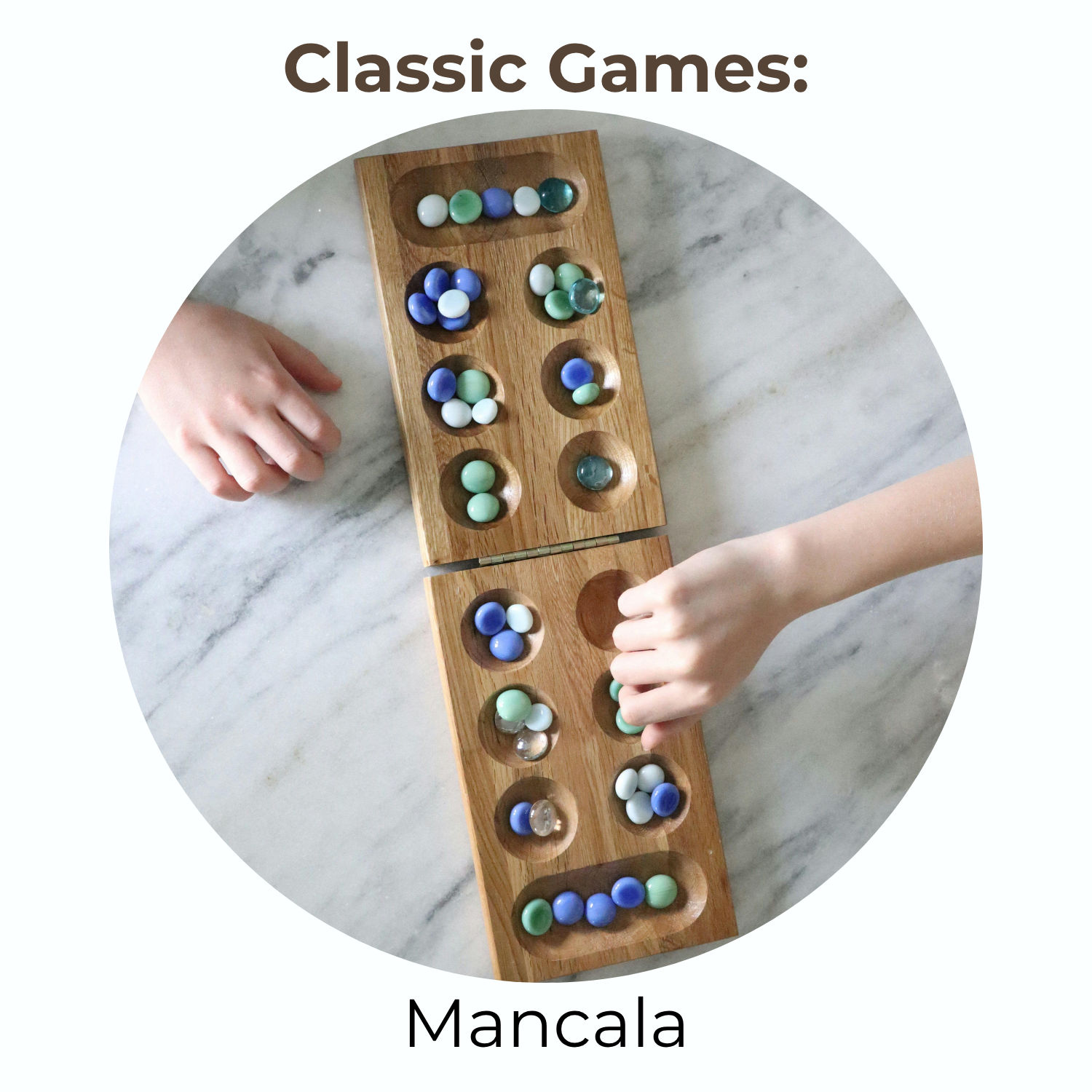
This week’s educational games is another classic game: Mancala! Mancala originated in Africa and the Middle East and is a game that involves counting, refined motor skills, and strategic thinking.
In Mancala, players compete to collect the most stones in their goal area. Simultaneously they have opportunities to strategically interrupt the other player’s game flow, leading for a deceptively complicated game. It’s ideal for two people that want to compete with each other and show off their analytical skills. On top of that, the game only takes around 15 minutes, which is perfect for a little break from work or study.
The game setup is easy. Each of the twelve pits on the board get four marbles or counters, and each players’ goal areas, or stores, which are placed at each end of the board, remain empty. Each player control the row of six circles that lead up to their store. In each turn, the player take the marbles from a pit on their side and move counter-clockwise along the board, dropping a marble into each pit along the way. When you get to your own store, leave a marble in it, and continue to the opponents side. Players skip the other player’s store, if they make it far enough to interact with it. The player with the most collected marbles in their store wins!
Did you Know?
Based on archaeological findings, mancala is one of the world’s oldest boardgames, dating all the way back to 6000 BC in Jordan. With its rich history, the name mancala originates from the Arabic word “naqala” which means “to move” or “to transfer”. Mancala is played everywhere, from Africa to the Middle East and Asia, and in South America.
But how did the game arrive in the Americas? Back when the slave trade was active, enslaved people brought to the Americas from Africa brought the game with them. Because Mancala is a simple game, you can use wood as a board or even just dig holes in the ground, and use seeds, marbles or small stones for counters.
Let’s Play!
We have a mancala game set at our office and use it with students when they need to take a short study break or to help them settle in at the beginning of a lesson. It can also be a great reward to play a game at the end of a lesson. This helps to increase their motivation and create a healthy balance between studying and taking a break. Come play with us!
